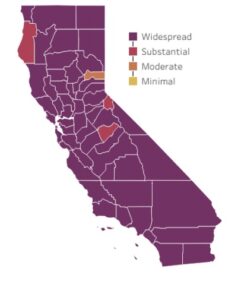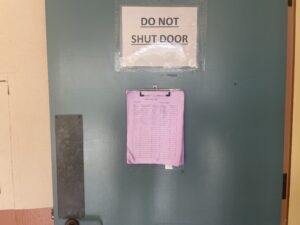“The Land of the Free”: One of the many things the United States of America is known for is democracy and freedom. Before December 15th, 1788, when the first president was elected, the USA created what they deemed to be the best compromise in which both the people and Congress choose the president. However, many argue that this system is outdated and needs to be rewritten for the sake of the majority in America.
Our Founding Fathers, in 1787, compromised to get the electoral college. The process of the electoral college consists of presidential candidates racing to be the first to get 270 electoral votes. Each state has a number of electoral votes, depending on the number of representatives and two bonus ones for senators. Larger states like California have fifty-five electoral votes but other states like Idaho only have four or Montana, Wyoming, North, and South Dakota with three.
Many faults have been brought up throughout the years regarding the electoral college arguing how undemocratic this process is. For instance, a president may win the electoral college but not the popular vote as in the 2016 election, meaning the majority of the USA did not vote for the elected president. Another fault would be that 538 votes are supposed to represent all 329.5 million residing in the US, but states do not split the vote, instead using a “winner-take-all” system. Most states tend to be guaranteed to parties so those that are considered “swing” states are more focused on because of how vital they are to winning. Overall, the electoral college seems to further distort the idea of “one person, one vote” because voices of the majority are not heard, electoral votes are not distributed by population, and they are not split. In smaller states, voters are overrepresented. According to the 2010 census, in Wyoming, an individual has more than triple the weight in electoral votes as opposed to persons in California. There is also a very minor but possible chance of a 269-269 tie with the electoral college. Possible enough that there is a separate process in which the House and Senate will vote. And it is almost impossible for third party candidates to win, originally there was not much of a party system in the 18th century and this problem had not arisen yet but we see now that third parties get little to no recognition and votes. Even if a third party does gain some traction it worries many because that could tip the entire election.
In 1787 when the electoral college was written, only white people were thought of and are still to this day the most heard when it comes to our “democracy.” During the time this was written in the constitution, slaves were still “legal” and affected the number of electoral votes per state. Their first question was if slaves should be counted as people at all and the separation of slave-owning and non-slave-owning states. In the south, roughly 40% of the population were slaves who could not vote. The founding fathers then settled on what we now know as “The Three-Fifths Compromise,” in which each slave was counted as three-fifths of a person. More importantly, the “winner-take-all” system underrepresents the citizens that did not vote for the elected candidate. In this year’s election, we had many very close states like Pennsylvania, Texas, Nevada, and many more in which so many people’s votes were erased in a sense. This year we had the largest turnout of voters because of how important this election was to many people, but unfortunately not all of these people had their voices represented equally.
Sources:https://www.archives.gov/electoral-college/about
https://www.history.com/news/electoral-college-founding-fathers-constitutional-convention






Be First to Comment